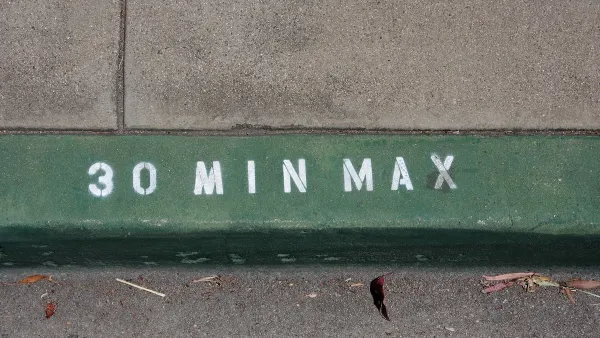What's causing underground parking spaces to go for $160,000 in Beijing? Quartz reports that demand, narrow roads, resident disenfranchisement and old zoning law give developers the upper-hand.
Gwynn Guilford writes of $100,000 parking spaces commonly found in Beijing. Underground parking contributes to China’s real estate speculation, led by “greedy property developers” and growing demand for automobiles. The article stresses that two variables account for why Beijing has some of the world’s most expensive parking spaces: growing car ownership and lack of proper legal knowledge and enforcement means residents pay exorbitant rates—perhaps on parcels they already own.
Thee real backstory here, according to Guilford, is that: “Zoning plans haven’t kept up with Beijing’s embrace of car culture; many slightly older developments were designed without allotting ample parking spaces," and on-street parking is rarely permitted.
The issue is more nuanced: “Beijing has among the lowest ratio of roads per overall land area of any major metropolis in the world…“ and with a population of 7.5 million cars—or a car for every 2.5 residents—private parking is prioritized. While the government vows to reduce a million cars by toying with the license plate lottery, that impending policy has created a "car buying surge" and with it, a "parking spot bubble" in real estate. Values even 30 miles from Beijing’s core cost more than the car itself.
Guilford details further Chinese property laws and elaborates on why residents are willing to pay inflated rents. This, she writes, is due to lack of knowledge about property law or the legal channels to enforce the law, meaning that developers contribute to the scarcity and exact skyrocketing prices “…for a parking space that [residents] legally own.”
FULL STORY: Parking in some areas of Beijing now costs more than $160,000

National Parks Layoffs Will Cause Communities to Lose Billions
Thousands of essential park workers were laid off this week, just before the busy spring break season.

Retro-silient?: America’s First “Eco-burb,” The Woodlands Turns 50
A master-planned community north of Houston offers lessons on green infrastructure and resilient design, but falls short of its founder’s lofty affordability and walkability goals.

Delivering for America Plan Will Downgrade Mail Service in at Least 49.5 Percent of Zip Codes
Republican and Democrat lawmakers criticize the plan for its disproportionate negative impact on rural communities.

Test News Post 1
This is a summary

Test News Headline 46
Test for the image on the front page.

Balancing Bombs and Butterflies: How the National Guard Protects a Rare Species
The National Guard at Fort Indiantown Gap uses GIS technology and land management strategies to balance military training with conservation efforts, ensuring the survival of the rare eastern regal fritillary butterfly.
Urban Design for Planners 1: Software Tools
This six-course series explores essential urban design concepts using open source software and equips planners with the tools they need to participate fully in the urban design process.
Planning for Universal Design
Learn the tools for implementing Universal Design in planning regulations.
EMC Planning Group, Inc.
Planetizen
Planetizen
Mpact (formerly Rail~Volution)
Great Falls Development Authority, Inc.
HUDs Office of Policy Development and Research
NYU Wagner Graduate School of Public Service




























